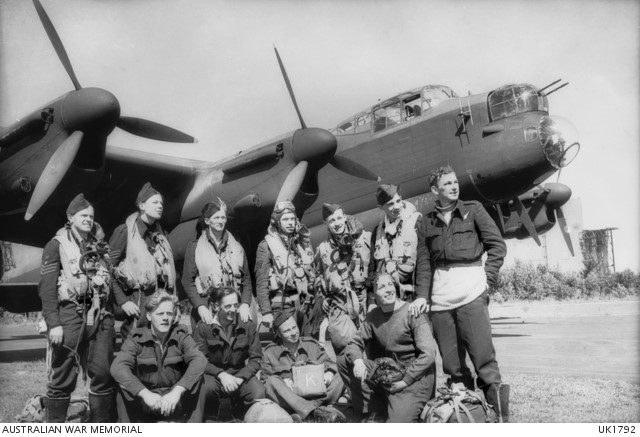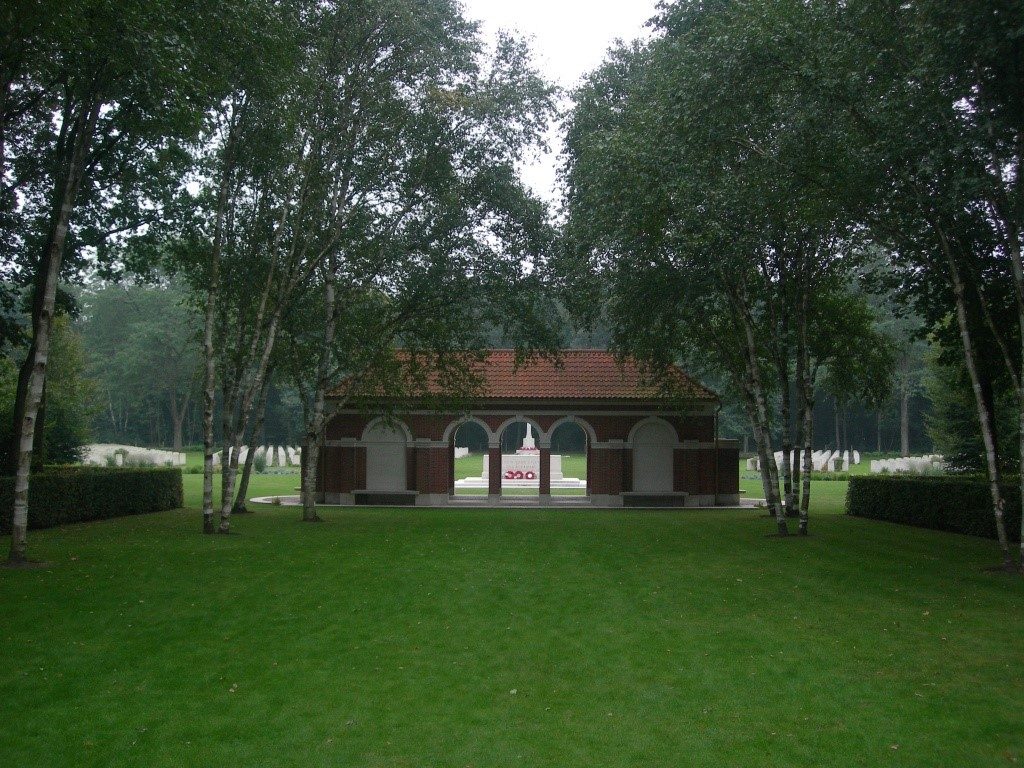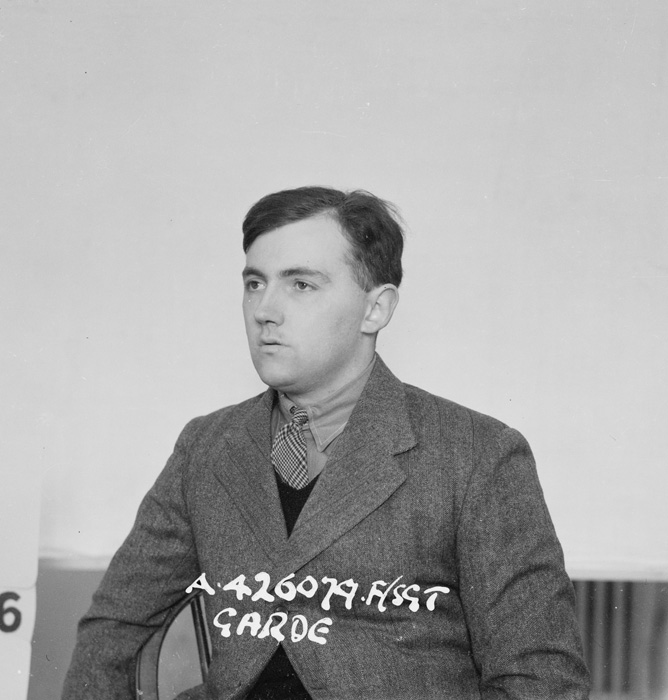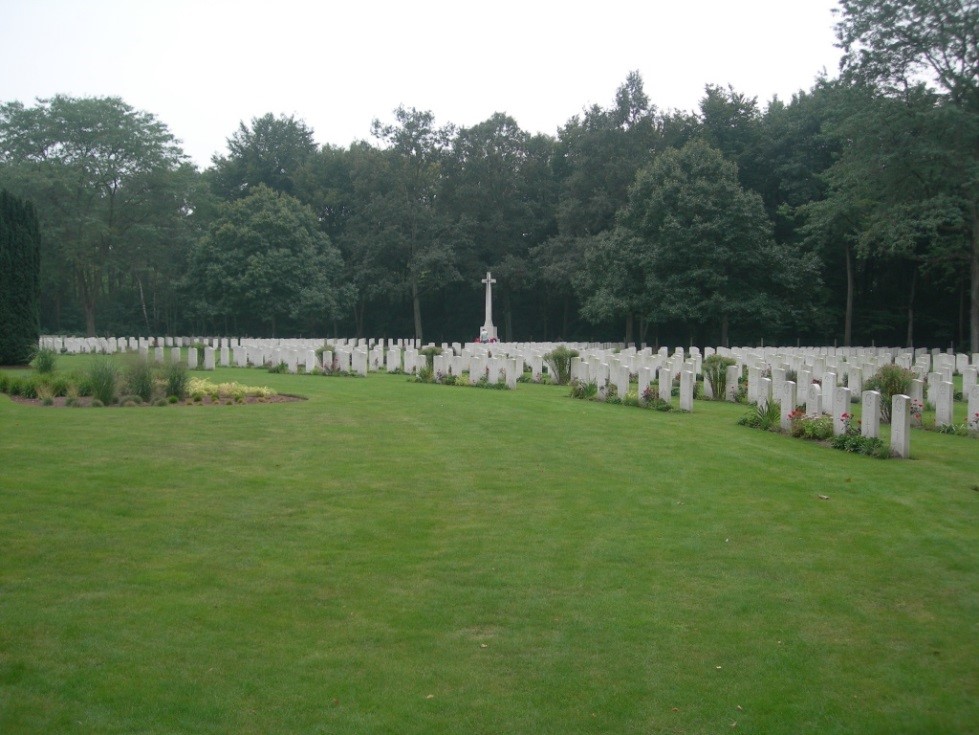Flight Sergeant Douglas Graham Garde, the son of William Ivers Garde and Eileen Grahame Garde (nee Mowbray), was born at Toowoomba in Queensland on 5th October 1920. He had been educated at the North State Primary School before attending the Toowoomba Grammar School where he completed the University of Queensland Senior Public Examination in November 1937. He then attended the University of Queensland during the years 1938 until 1940 where he completed a Bachelor of Arts/Law course. After completing his university studies, he was then employed as an Assistant Master at the Church of England Grammar School in East Brisbane. He applied for aircrew training in the Royal Australian Air Force on 25th November 1941. He had previously served as a Private in the 9th/49th Infantry Battalion for two years. He was enrolled in the Reserve of the R.A.A.F. on 9th December 1941 and issued Reserve Badge 12857 after swearing an oath of affirmation. At the age of 21 years and 2 months he was enlisted into the Citizen Air Force of the R.A.A.F. at No. 3 Recruiting Centre in Brisbane on 23rd May 1942 after making a commitment that he would serve for the duration of the war and an additional twelve months. He was allotted the service number of 426079. His physical description at the time of his enlistment was that he was 5 feet 8 inches in height and weighed 147 pounds. He had a medium complexion, green eyes and dark brown hair. He stated that he was of the Church of England religion. He gave his next of kin as his father, Sergeant William Ivers Garde of the Intelligence Section at Headquarters Northern Command.
Flight Sergeant Douglas Garde joined No. 3 Initial Training School at Sandgate in Queensland on 23rd May 1942 where he received instruction in the basics of Air Force life. He joined No. 1 Air Observer School at Cootamundra in New South Wales on 20th August 1942 for air observer training. He joined No. 1 Bombing and Gunnery School at Evans Head in New South Wales on 14th December 1942. He joined No. 1 Air Navigation School at Parkes in New South Wales on 8th February 1943. Upon completing his course at the Air Navigation School he was promoted to the rank of Temporary Sergeant and awarded the Navigator Qualification Badge on 4th March 1943.
He was transferred to No. 3 Embarkation Depot at Sandgate on 13th March 1943 and to No. 2 Embarkation Depot at Bradfield Park in Sydney to prepare for overseas service. He embarked by sea transport from Brisbane in Queensland on 16th April on attachment to the Canadian Air Force. He disembarked from the ship in Canada and joined No. 3 Manning Depot at Edmonton in Alberta on 5th May 1943. He embarked from No. 1 (Y) Depot at Halifax in Nova Scotia for England on 16th June 1943 on attachment to the Royal Air Force. Upon his arrival in England he joined No. 11 Personnel Despatch and Reception Depot at Bournemouth on 1st July 1943. He was transferred to No. 4 (Observer) Advanced Flying Unit at Royal Air Force Station West Freugh on 17th August 1943 where he received bombing and gunnery training for Observers. He was promoted to the rank of Flight Sergeant on 17th November 1943.
He was transferred to the Battle School at No. 51 Base in Lincolnshire on 19th January 1944 and he served with No. 1660 Heavy Conversion Unit at Royal Air Force Station Swinderby during the period 26th February until 11th April 1944. The 1660 Conversion Unit qualified crews trained on medium bombers to operate the heavy bombers prior to being posted to an operational squadron. He joined No. 467 Squadron Royal Australian Air Force for operational duty on 30th April 1944.
Flight Sergeant Douglas Garde was a Navigator and member of the crew of a No. 467 Squadron Royal Australian Air Force Lancaster Bomber FD657 that was lost on air operations to Germany on the night of 21st/22nd May 1944. The aircraft left its base at Waddington in Lincolnshire to attack targets at Duisburg but failed to return. The Air Ministry notified his father, residing at 496 Milton Road, Toowong, Brisbane, that he was missing on air operations presumably due to enemy action. The International Red Cross Committee in Geneva was advised that Douglas Garde and another crew member were dead. He was laid to rest in the Jonkerbos War Cemetery in the Netherlands. At the time of his death Douglas Garde was 23 years of age.

Australian War Memorial photograph UK1792
Group portrait of aircrew and ground staff in front of their No. 467 Squadron Lancaster at RAF Station Waddington.
Flight Sergeant Douglas Garde’s name is commemorated on Panel No. 110 at the Australian War Memorial in Canberra and locally on the Toowoomba Mothers’ Memorial, the Toowoomba Soldiers’ Memorial Hall Honour Board and the Toowoomba Grammar School WW2 Honour Board.
Note
Subsequent to a visit by an Australian to the cemetery, several bodies were exhumed in 1948 that allowed positive identification of Douglas Garde. His remains were re-interred and a permanent headstone erected over his grave. A photograph of his grave was received by his family in June 1949. Douglas Garde’s father had served in World War 1 and also in World War 2. Each grave of an allied airman was adopted by the citizens of Venlo who ensured that they were cared for and maintained.
The following notice was published in the Brisbane Telegraph on Wednesday 19th July 1944:
AIR FORCE CASUALTIES – Mr and Mrs W. I. Garde (formerly of Toowoomba), of 496 Milton Road, Toowong, have been notified that their only son, Flight Sergeant Douglas Graham (Tim) Garde, who was navigator of a Lancaster heavy bomber and was reported missing over Duisberg, Germany, on May 22, is now believed to have lost his life on that operation. An outstanding student of the Queensland University, he was attached to the teaching staff of the Church of England Grammar School before enlistment in the RAAF. He was 23 years of age.

The entrance to the Jonkerbos War Cemetery
Toowoomba Grammar School archive records show that he was affectionately known as Tim. He enrolled as a day student on 30th January 1934 and left the school on 3rd December 1937. His parent was shown as William Ivers Garde, 105 West Street, Toowoomba. He received the Stumm Language Prize in 1937. After completing the Senior examination, he was awarded a University Scholarship and he continued his studies in Arts/Law at the University of Queensland. He later was employed as a member of the teaching staff at the Church of England Grammar School, East Brisbane.
The following article and his photograph appeared in the Old Boys’ Register in June 1938: D.G. Garde. – Son of W.I. Garde, an Old Boy. Came to us in 1934 and passed the Junior in 1935 (3 A’s). His skill in languages and his industry enabled him to pass the 1937 Seniot with 5 A’s and win the 11th Open Scholarship. He is now at St. John’s studying Arts/Law, with a view to keeping up the family tradition. He was a keen athlete, meeting with success in football (2nd XV) and in Junior Athletics.
The following obituary was published in the Toowoomba Grammar School Magazine in November 1944:
Word has been received by Mr and Mrs W.I. Garde, Toowong, Brisbane, and formerly of Toowoomba, that their only son, Flight Sergeant Douglas Graham (Tim) Garde, who was a navigator in a Lancaster bomber, and who was reported missing in air operations over Duisberg, Germany, on May 22nd, is now believed killed. Flight Sergeant Garde was born in Toowoomba and had a brilliant scholastic career. Receiving his early education at the North State School, Toowoomba, he secured a Scholarship to the School, from which School he won an open Scholarship to the Queensland University, and subsequently graduated in Arts. At the time of enlistment he was attached to the teaching staff of the Church of England Grammar School, East Brisbane. He was 23 years of age. His parents have been officially advised that his name appears in a casualty list issued from Berlin, which states that he has been buried in the war cemetery at Venio, province of Limburg, Netherlands.




